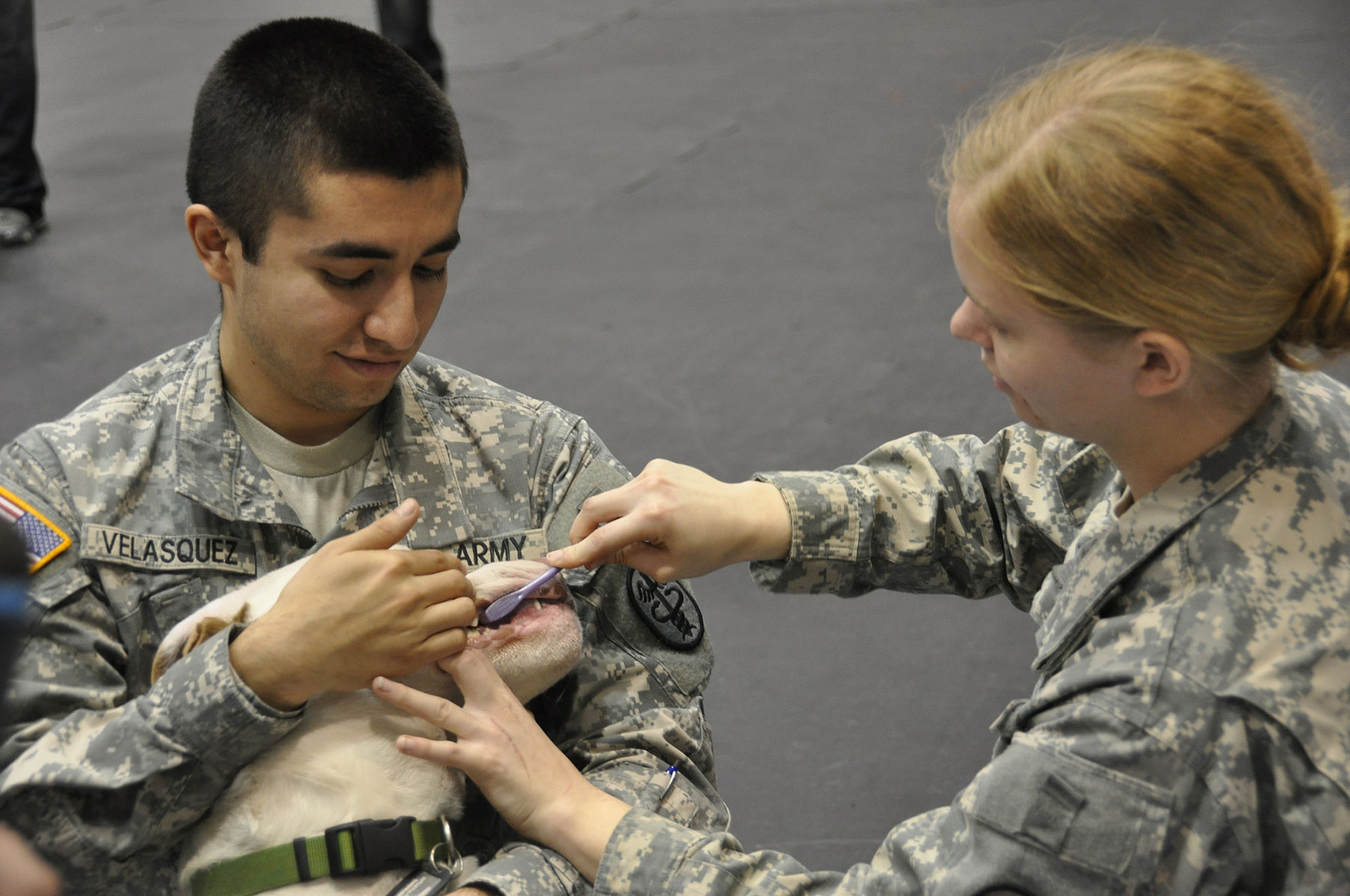
07 Jan Oral Home Care: Choosing the Right Toothbrush and How to Brush Your Pet’s Teeth
Toothbrushing is considered the ‘gold standard’ in oral home care. Studies have shown that the simple mechanical action of brushing the teeth is the most effective way to remove plaque, with or without toothpaste. When teeth first erupt, they are clean and in perfect condition. However, the natural process of eating and drinking causes plaque to accumulate, forming a substance called calculus. (Plaque is colonized bacteria and calculus is mineralized plaque, which can occur within days.) Over time, this build up begins to affect the tissues surrounding the teeth, leading to a tender mouth, broken teeth, and even eventual tooth loss.
Choosing the Right Toothbrush
There are different types of toothbrushes designed for both dogs and cats, and the toothbrush you choose will depend on your experience brushing your pet’s teeth as well as the size of your furry friend. If you are just beginning, a finger brush is an excellent option, because it allows for a greater tactile sensation when starting to brush the teeth.
Once you have some experience under your belt, we a recommend using a C.E.T. toothbrush, which can be obtained from your veterinarian or online. The C.E.T. mini-toothbrush is a great option for use in small dogs and cats and features a small end and fingertip-design brush with soft bristles making it easier to use. The C.E.T. dual-ended toothbrush features a long handle with a larger end and a smaller end for those larger and smaller tooth surfaces. And finally, the C.E.T cat toothbrush has long, soft bristles with a pointed tuft, which makes it easier to brush a cat’s hard-to-reach back teeth.
Developing a Routine
Dogs and cats are creatures of habit. And as with any endeavor that requires training or teaching our pets, consistency is key. That means it’s critical to have a routine when brushing their teeth. Choose the same place, and ideally the same time, every day. Our pets frequently watch what we do and oftentimes mimic our behavior. For that reason, we suggest that for dogs, you choose the bathroom as the place to brush their teeth after you brush yours. Cats tend to object to items being brought to their face. Brushing may be better received if your feline friend is sitting on your lap while brushing the teeth from behind.
This behavior should be voluntary, never forced, and repeated with positive reinforcement. Some pets truly enjoy the taste of a pet-specific toothpaste. And offering a dental specific treat after brushing can be a great way to positively reinforce their good behavior. So here is how to brush your pet’s teeth:
How to Brush Your Pet’s Teeth
When brushing the teeth, consider action as well as duration. The brush should be applied to the surface of the teeth at a slight angle. The brushing stroke should be side-to-side rather than up and down. The touch of the brush on the tooth surface should be light and not cause irritation to the gums—if you notice the bristles of the brush are bending, then brushing is too aggressive.
As for duration, brush for 5-10 seconds on each section of teeth—incisors (front teeth), canines (fangs), and premolars and molars (cheek teeth). Focus on the outer surface of the teeth that you see rather than the inner surface. And, returning to the idea of consistency, each time you brush your pet’s teeth, start on one side of the mouth and then move to the other.
Another common question we get is how often your pet’s teeth need to be brushed? For humans, oral home care is a twice-daily routine. Similarly, once to twice daily is reasonable for our furry friends as well. When our pets become accustomed to this routine, many look forward to it.
Be Patient!
Finally, remember that with any training, initial attempts may be challenging and not very successful. However, with consistency, patience, and positive reinforcement, progress will occur. It’s been shown that pets who live free from dental disease live 25% longer than those with poor oral health. If you live in Loveland, Castle Pines or Colorado Springs, Colorado, and have remaining questions about your pet’s oral health, we’d be delighted to speak with you. Contact us today!
Images used under creative commons license – commercial use (1/10/19) Aberdeen Proving Ground (Flickr)

